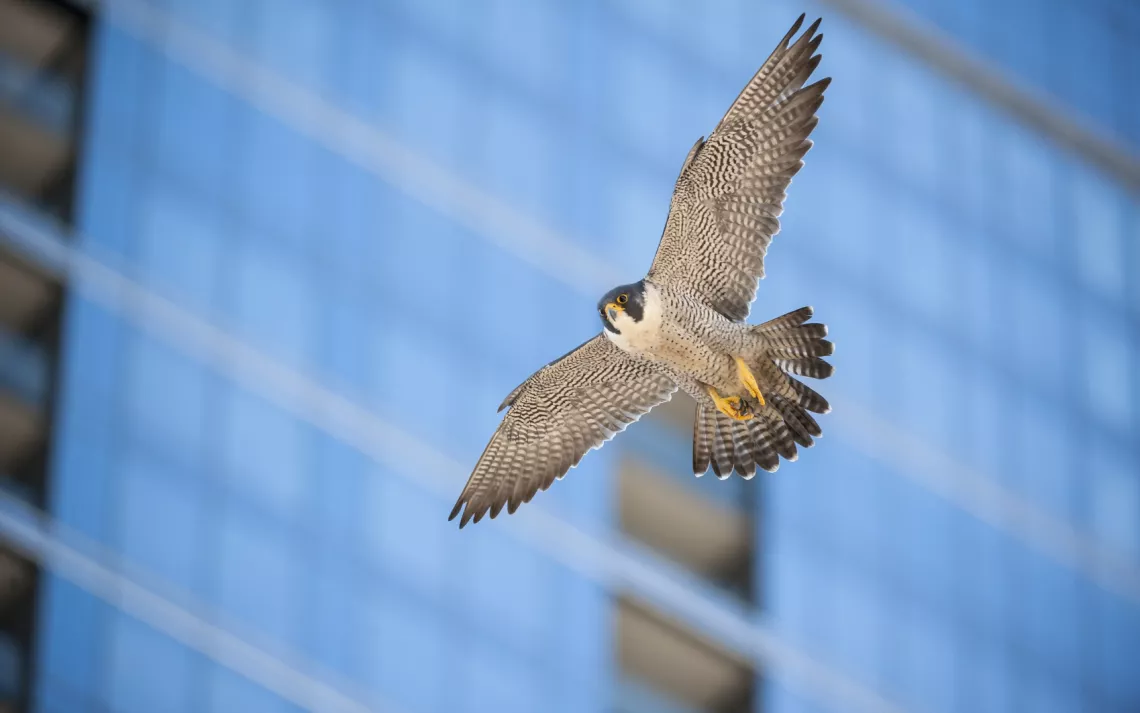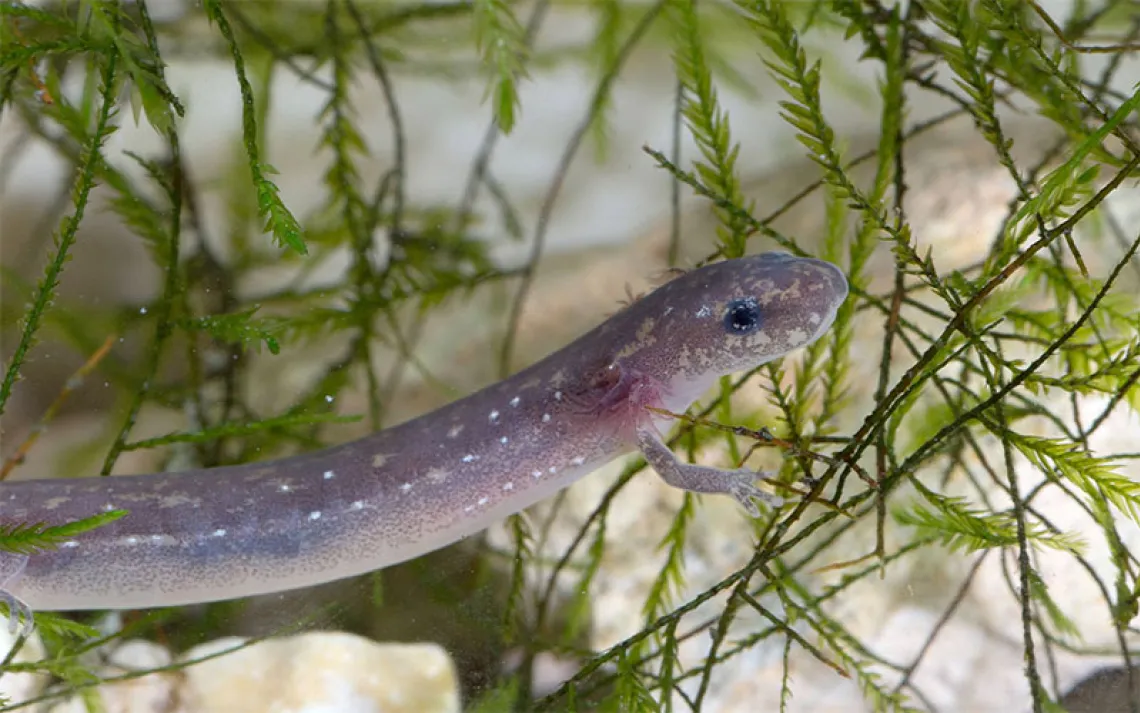When urban raptors attack

Peregrine falcons are cliff nesters and do well raising their young on building ledges. Photo by Frank Hildebrand.
It all happens in a blur: the dive, the hit, the feathers flying everywhere. And off flies another friendly urban raptor, dead pigeon in tow.
Walking the city sidewalks, we often notice the ubiquitous pigeon underfoot and the occasional rat scuttling across the sidewalk, but rather than looking at them as pests, how about thinking of them as prey? Raptors, which include hawks, owls, and falcons, are attracted to cities because they can subsist on the numerous birds and rodents that exist there.
To spot these birds of prey of the city, one needs to be quick. Knowing how to identify bird behavior can help, such as noting when pigeons, gulls, and starlings suddenly scatter and fly in erratic formations. By keeping your eyes to the sky when this happens, you may catch a fleeting glimpse of a red-shouldered hawk, a cooper’s hawk, or a peregrine falcon. And the pure luck of sighting a raptor on its kill is something to see –- morbid, yes –- as it plucks the feathers off of its unlucky catch.
Warning: The video below is not for the faint of heart.
Many cities around the world are home to these feathered predators, in fact, some have become famous for nesting in view of the public on the high ledges of buildings. Arguably the most famous is the iconic Pale Male, a red-tailed hawk that nested on a building alongside New York City’s Central Park in the early 1990s. The drama of its life as a bird of prey raising and protecting its young played out in front of gads of spectators. In Britain’s Norwich, peregrine falcons have become the rage as they raise their nestlings to fledge (take their first flight) while spectators enjoy an up-close view thanks to installed ledge cameras.
Owls, too, are coming into the cities to take advantage of the food sources and the wooded city parks. While they’re less likely to be seen, the omnipresence of nighttime streetlights could possibly aid in the sighting of one of these soft, wide-eyed creatures.
Feathered predators are not just a novelty, their very presence can be telling of the health of the urban habitat they occupy. Being apex predators, which exist at the top of the food chain, can help indicate that even a business park could be a place of biodiversity. Raptors, simply put, add a dose of wild to our cities, reminding us that even in the middle of a city, we’re not the only ones on this planet.
Follow Sierra on Facebook, Twitter, Pinterest, Instagram and YouTube.
 The Magazine of The Sierra Club
The Magazine of The Sierra Club



